By Chris W.J. Roberts, 15 February 2024
The Red Sea shipping crisis has shredded assumptions about the ability of international law, economic interdependence and coordinated seapower to keep vital sea lanes free for global commerce. By the end of January 2024 so many shipping companies had rerouted their vessels around Africa that Suez Canal traffic had decreased by 50%. Shipping and insurance costs have risen, average travel time has increased by a third, there are more emissions per trip, and ports and companies are experiencing supply disruptions.
Since mid-November, the Ansar Allah movement in Yemen – better known as the Houthis – has effectively turned the Red Sea, Bab-el-Mandeb Strait and the Gulf of Aden into a testing ground for new maritime weapon systems. The USN’s Chief of Naval Operations, Admiral Lisa Franchetti, speaking about the Red Sea air defence mission, “acknowledged that the [US] Navy now faces an operating environment in which “sea control is neither guaranteed nor freely given.”[1] She listed the results of USN anti-air activities to date: over 70 Uninhabited Aerial Vehicles (UAVs), 7 cruise missiles, and “for the first time in history,” 14 anti-ship ballistic missiles shot down. One US Marine Corps Harrier pilot has shot down 7 UAVs since December. And that doesn’t count over 70 weapons plus related radar, communications and logistics facilities destroyed by US and UK airstrikes and missiles in Yemen since 11 January. While Houthi missile capabilities have been degraded, it is difficult to eliminate all UAVs and Uncrewed Surface Vessels (USVs) given their size, ubiquity and assembly in Yemen.[2]
Why should Canadians care about this skirmish off the northeast coast of the African continent? What relevance is there for Canadian security or prosperity? In fact, the stakes could not be higher for Canada, a country which is heavily dependent on international maritime law for a rules-based order, trade for prosperity and international allies for security.
When US Secretary of Defense Lloyd Austin announced Operation Prosperity Guardian (OPG) on 18 December 2023, Canada was one of the countries listed as willing to be mentioned publicly.[3] Canada’s involvement in maritime security in the region goes back to 2001 and the naval response to the 9/11 attacks. It was an early member of the multilateral naval coalition, Combined Maritime Forces (CMF), under which OPG is organized. Canada has regularly contributed ships, staff officers, CP-140 Aurora aircraft and task force commanders to CMF under Operation Artemis.[4] Today, Canada has command of the original Combined Task Force 150 (CTF 150) and deputy command of the training-focused CTF 154. About 25 CAF personnel and two civilians are posted to CMF. But the odds of seeing an RCN frigate join American, British, Indian and other European warships in the Red Sea region are near zero.
That might seem strange as it was less than a year ago that HMCS Montréal and MV Astérix transited the Red Sea and happened to be in the right place to assist with personnel evacuations from Sudan as a civil war broke out. While the Houthi anti-maritime capabilities were known at the time – with ongoing supplies, training and likely operational personnel coming from Iran for many years[5] – the Saudi-Iran rapprochement in March 2023 reduced the regional threat environment. It was not until mid-November that the Houthis ramped up maritime activities in response to the war in Gaza by first detaining MV Galaxy Leader and then launching sporadic attacks at other commercial vessels.
There is no doubt that Canadian staff officers working in Bahrain with US Central Command and CMF are doing excellent work. But what CMF and OPG need are frigates and destroyers with significant anti-air/anti-missile and, preferably, some surface strike capabilities. Even if Canada had a frigate available to deploy in 2024, as currently configured, they are not equipped to fight in the Red Sea under the threat conditions. That alone should shake Canadians out of their sea blindness.
A non-state actor has surface and air capabilities that could overwhelm the systems, weapons and ammunition of Canada’s main warship. Until the Halifax-class frigates have fully completed their missile/weapon systems upgrade, they would be extremely vulnerable within 50-100 nm of Yemen’s coast. Would any Prime Minister want to take the risk of a Canadian frigate taking a serious hit, even if that’s a 1-10% chance? Would it be fair to Canadian sailors to put them in that environment?
Canada has shown itself to be a supportive ally, but Canada increasingly does not have the means to contribute meaningfully and allies have noticed. As Lawrence Herman pointed out in The Globe and Mail, “The risk is that being a laggard in military and defence expenditures weakens Canada’s standing in foreign capitals and reduces the country’s ability to resolve disagreements in trade and other critical areas.”[6]
The Canadian response to the Red Sea crisis is an indicator of our inability to be relevant, with implications for prosperity and security. Policymakers have not yet made the case to the Canadian people about the real impact the Red Sea disruptions are having on the international rules-based order and the global economy, including inflationary pressures. Lack of capability keeps us from showing up to the biggest disruption in shipping since unrestricted submarine warfare, or at least the Suez Canal closure of 1967-75.
The Americans and British are also expressing concern that the level of missile attrition to counter Houthi attacks is challenging replenishment and resupply assumptions, let alone the bean counters who point out the cost-benefit of firing $2 million missiles to take out $50,000 (or less) UAVs. Even after the upgrade, our frigates will only have 16 Enhanced Sea Sparrow missiles in their vertical launch system (VLS) tubes without the ability to reload organically or at sea.[7] (USN Arleigh Burke-class destroyers cannot reload their VLS missiles either, but they have many more launch tubes. Even the new American Constellation-class frigates under construction will have at least 32 VLS plus other systems useful for layered air defence.)
So, looking ahead to lessons learned for the Canadian Surface Combatant, are 24 VLS tubes enough (which can be filled with surface-to-air or land-attack missiles) in addition to the Sea Ceptor close-in air defence system? Given the trend towards swarm attacks by anti-ship missiles, UAVs, crewed/uncrewed surface vessels, ammunition stores could be gone in a matter of hours in a medium intensity environment. Then you need to find a friendly port with pre-positioned supplies to rearm. Having previously established relations in strategically located countries goes a long way to solving that logistics hurdle.
The African continent sits astride four of the Earth’s major shipping choke points (Suez Canal, Red Sea/Bab-el-Mandeb Strait, the Cape route and Gibraltar). Across the Red Sea and Gulf of Aden from Yemen are African states without the capacity to exert influence in their territorial seas let alone in their Exclusive Economic Zones. We are facing the consequences of neglecting those facts.
We have so few frigate weeks at sea planned in 2024 and they are so closely tied to NATO and Indo-Pacific Strategy commitments, that there is minimal wiggle room for commitments to support operations in the Western Indian Ocean, or elsewhere around Africa if we don’t feel comfortable putting a frigate in range of an Iranian-supplied anti-ship ballistic missile.
The increased maritime traffic around Africa is also stressing African ports and bunkering facilities, security and environmental surveillance, and even piracy is on the rise again. Canada still intends to participate in the annual US-led Obangame Express exercise in the Gulf of Guinea, but only with shore-based personnel,[8] ending years of annual two-ship Kingston-class deployments. The lack of Canadian ships in African waters in 2024 goes against what Rob Huebert and I argued in an article (“The RCN and African Maritime Security: Forward Security Strikes Back?”) published in the recent issue of CNR.[9] Working with African partners and in African waters on a regular basis provides the relationships and experience to strengthen global maritime governance and counter future maritime challenges. Hopefully a new Canadian strategy for Africa will recognize links between political instability on land and increased insecurity at sea, informing the long-awaited Defence Policy Update.
The lack of hulls and sailors to deploy more ships in 2024 is not the Navy’s fault, but a symptom of the acute strategic leadership and procurement woes facing Canadian defence policy over the last 20 years. There are strategic, operational, tactical and planning-procurement lessons to be learned from the Red Sea crisis for Canada and particularly the RCN. But is there any political will to apply those lessons and explain their implications to the Canadian voter and taxpayer? Sadly, no. And that remains the core problem putting Canadian prosperity and security at risk in an increasingly dangerous world.
[1] “U.S. Navy's Top Officer Touts Success of Red Sea Air Defense Mission,” The Maritime Executive, 13 February 2024, https://maritime-executive.com/article/u-s-navy-s-top-officer-touts-success-of-red-sea-air-defense-mission
[2] Thomas Harding, “The Houthis have built their own drone industry in Yemen,” The National, 13 June 2020, https://www.thenationalnews.com/world/mena/the-houthis-have-built-their-own-drone-industry-in-yemen-1.1032847
[3] “Statement from Secretary of Defense Lloyd J. Austin III on Ensuring Freedom of Navigation in the Red Sea,” US Department of Defense, 18 December 2024, https://www.defense.gov/News/Releases/Release/Article/3621110/statement-from-secretary-of-defense-lloyd-j-austin-iii-on-ensuring-freedom-of-n/
[4] “Operation ARTEMIS,” Canadian Armed Forces – Current Operations, last updated 7 February 2024, https://www.canada.ca/en/department-national-defence/services/operations/military-operations/current-operations/operation-artemis.html
[5] Iran: Enabling Houthi Attacks Across the Middle East, Defense Intelligence Agency, February 2024, https://www.dia.mil/Portals/110/Documents/News/Military_Power_Publications/Iran_Houthi_Final2.pdf
[6] Lawrence Herman, “Canada must realize that a strong economy comes from a strong military,” The Globe and Mail, 13 February 2024, https://www.theglobeandmail.com/business/commentary/article-canada-must-realize-that-a-strong-economy-comes-from-a-strong-military
[7] Dan Middlemiss, “Missile Reloads at Sea: The Next Big Thing?”, Canadian Naval Review – Broadsides Discussion Forum, 29 March 2023, https://www.navalreview.ca/2023/03/missile-reloads-at-sea-the-next-big-thing
[8] Neil Moss, “Navy won’t send ships in annual West Africa deployment amid readiness woes,” The Hill Times, 31 January 2024, https://www.hilltimes.com/story/2024/02/05/off-course-the-canadian-armed-forces-lack-direction/410428/
[9] Rob Huebert and Chris W. J. Roberts, “The RCN and African Maritime Security: Forward Security Strikes Back?”, Canadian Naval Review, Vol. 19, No. 3 (2024), https://www.navalreview.ca/wp-content/uploads/public/vol19num3/cnr_vol19_3_Huebert_Roberts.pdf

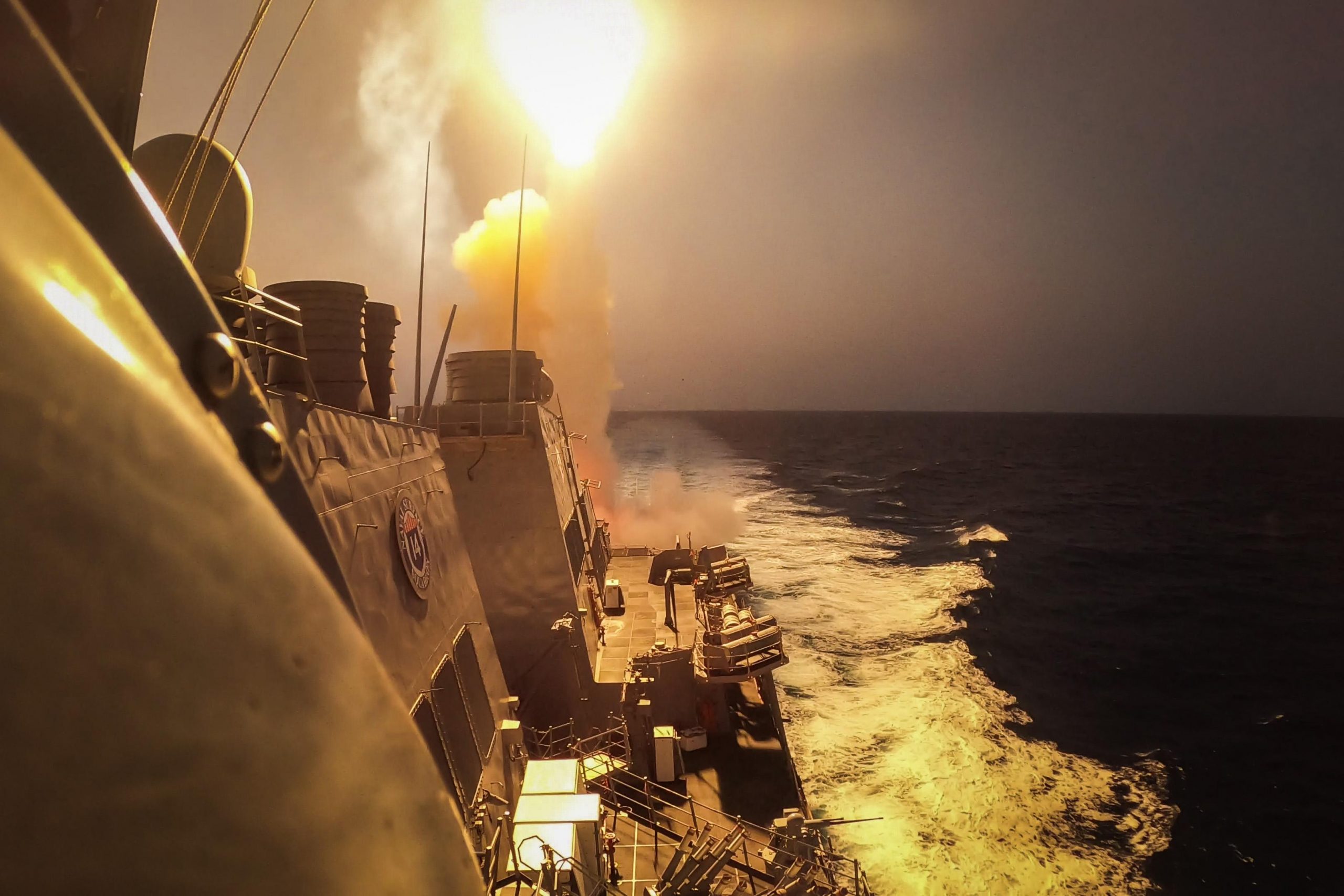
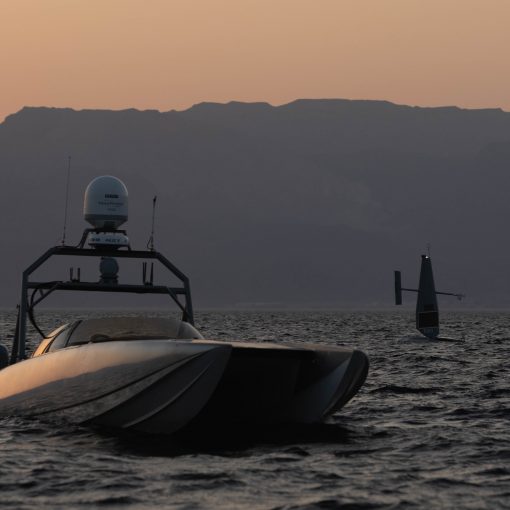
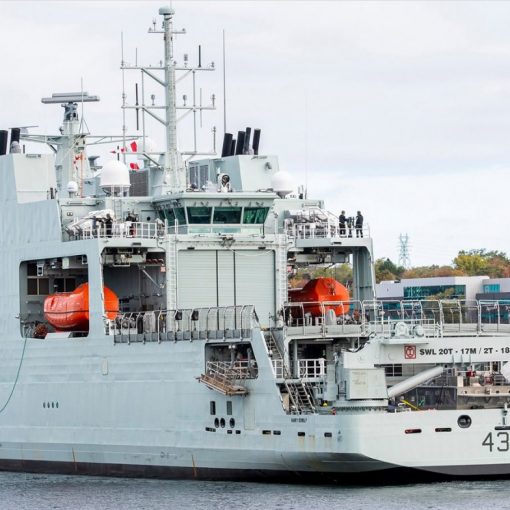
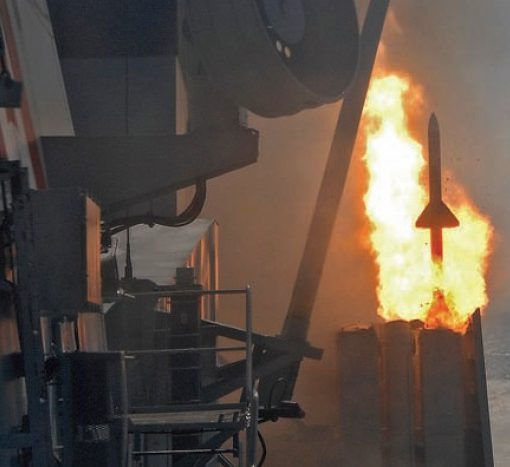
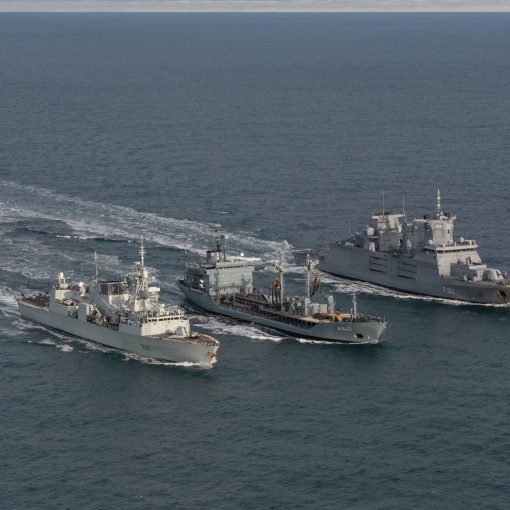
18 thoughts on “Navy No Show in Red Sea”
In response to the following paragraph: “So, looking ahead to lessons learned for the Canadian Surface Combatant, are 24 VLS tubes enough (which can be filled with surface-to-air or land-attack missiles) in addition to the Sea Ceptor close-in air defence system? Given the trend towards swarm attacks by anti-ship missiles, UAVs, crewed/uncrewed surface vessels, ammunition stores could be gone in a matter of hours in a medium intensity environment. Then you need to find a friendly port with pre-positioned supplies to rearm. Having previously established relations in strategically located countries goes a long way to solving that logistics hurdle.”
I would say that for dealing with threat environments like what is ongoing in the Red Sea with air/sea based drones, ballistic missiles, cruise missiles, rockets and anti-ship missiles, the currently known specifications of the Canadian Surface Combatant are well equipped to deal with most of these threats. The OTO 127mm/64 LW gun is capable of punching outwards to ranges and dealing with both sea based and especially aerial drone threats if we procure ammunition similar to what the US Navy has been using in the Red Sea, considering they have apparently used their 5″ guns with Kinetic Energy Electronically Timed rounds. These rounds are effectively a large shotgun shell which are great for ripping apart most drone and small boat threats at range. The 30mm autocannons and likely guided .50 caliber machine gun positions can also act as effective small target defenses at closer ranges. With a battery of 24 CAMM and a likely typical Mark 41 VLS loadout of 32 ESSM Block II and 16 SM-2 Block IIIC, this gives the CSC ample magazine depth for multiple smaller engagements or one/two larger scale engagements alone against effectively all threats minus ballistic missiles.
The SPY-7 radar, Co-Operative Engagement Capability, CMS-330 and elements of the AEGIS combat system make the CSC a very capable sensor platform and incredibly capable in its ability to tie into US Navy task force elements. At-sea replenishment of missiles is an active problem for every Navy on Earth effectively and is something apparently being looked at by the US Navy. Time will tell if an effective solution is brought up.
Hi Jimmy,
Thanks for your comments here. Yes, an eventual CSC will have incredible capability compared to even our enhanced CPFs. I am wondering if you know why over the CSC design-gestation period the number of VLS tubes fell from 32 to 24? To be clear, I wasn’t saying that CSC wouldn’t work in the current Red Sea environment, just that we need to consider this is what a low-medium intensity level of combat operations looks like, we haven’t seen this in decades, and we need to be prepared for medium-high level intensity. So, initial load-out and then replenishment planning considerations become even more important on an operation-by-operation basis.
It was weight and the decision was made. Given what they know now the 32 probably would have gone back in, however to do so would have delayed the project even more.
Hello Chris,
Thank you for the well written and insightful article. I do not have an official answer regarding the reduction in VLS cells on the CSC as the reasoning was never released to my knowledge, however I can speculate with what I think is reasonable accuracy. The most likely reason I can gather is a conscious choice by the RCN to lower cost, lower weight and minimalize complex changes versus the baseline Type 26. This is likely done in an attempt to finalize the design and prepare it for initial production faster. With the current VLS count, CSC shares the same arrangement and layout of cells as the Type 26 frigate itself. Admiral Topshee has gone on record saying that the follow-on ships in the class may have additional systems compared to the first trio of ships, which may include a return to the originally planned 32 VLS.
Agreed with your other points, the fact that non-state actors can threaten shipping and proper warships to such a degree really shows why an upgrade in capability like CSC over a Halifax or similar second line frigates is so valuable.
This Liberal government might have to obtain NDP approvals to do anything.
The truth of the matter is that we are experiencing a shortage of ready to deploy hulls and personnel. We currently have one CPF deployed to Europe on a NATO exercise and one CPF in the hopper to deploy to the Pacific as that is the priority by the government. If it was deployed to help in the Red Sea it certainly could in conjunction with other allies contribute to the mission.
The CSC with its 24 VLS and if quad packed 96 missiles and with CAMM could certainly operate in a Red Sea type situation. We do need a more efficient way to do reloads in theater and cheaper options such a direct energy weapons to deal with UAV’s, AUV’s and missiles. The second flight of CSC will see a greater amount of missiles and options for that are currently being developed.
I agree with the decision to not send the Kingston Class to West Africa this year. While building relationships is fine, the transit and operating conditions were hard on the ships and crews. The ships weren’t designed to operate in that sort of heat and the operation was shortening the life of the systems on those ships. West Africa is a hard place to get short support. Reallocation of these deployers to OP REASSURANCE as part of NATO was in my opinion more important and a good move.
This entire navy is obsolete. The best we can manage is 2 ships? No submarines? And we still mention the Kingston Class.. Are we serious? Might as well send a couple of tug boats which would be more effective. We still haven’t seen the final design of CSC, started building them and the first one won’t even be available until the mid 2030’s. Let’s park the ships we have because the government is going to rely on protection from the USA.
We debate about this and that, cry about money the government doesn’t want to spend on the military which makes Canada look like a freeloader that we are. As a Canadian I’m truly embarrassed.
Well I was speaking to the East, the West Coast are sending ships out the door as well. There is a deployment for submarines coming I believe so there’s that. The Kingston Class are deploying for OP Reassurance as well.
What will we send? To be completely blunt we have nothing of much use.
A Halifax class with 16 ESSM missiles is hardly going to be in theater long before that is becoming a problem. Bear in mind in the span of 2 weeks HMS Diamond took down 19 drones and missiles so if we are using that as a base point our Halifax would be in position for maybe a week and a half before having to withdraw?
The Halifaxs are not really suited to AAW. They are a General Purpose escort, while the UK’s own General Purpose escort the Type 23 Frigates of similar size currently have a 32 cell VLS for Sea Ceptor with a comparable missile.
Note: there are two batches of type 23 frigates one set (8) are prime ASW the others (5) are considered general purpose the difference being in sonar systems carried chiefly.
Exactement, Blair. We can’t send a CPF as currently configured into the Red Sea or Gulf of Aden, and even an enhanced CPF with ESSM could get overwhelmed quickly in the Red Sea environment, requiring withdrawal for replenishment. We could, however, be assisting more in the wider area of operations on interdicting Iranian resupply and other smuggling missions which keep the Houthi threat active, which we’ve done successfully over the years through CMF’s CTF 150 and 151.
It’s going to be a rough 10, 15 years until we see the Halifax-class replaced with the CSC.
Something stinks here, but it’s not the RCN’s unreadiness. I have no problem that we have no ships in the Red Sea. We’re at a point where we have no choice but to husband our meagre naval resources. Commitments to NATO and the Indo-Pac are more than enough to keep us busy.
No, the issue is why the burden of fighting disorder at sea must fall so heavily on the USN – again. Are those merchantmen diverting around the Cape of Good Hope bound for US ports? Not many, from what I hear. In fact, most of the ships transiting the Red Sea are going to and from Europe. So where are the European navies (the RN excluded)? Is this not fodder for isolationist Republicans who perceive more free-loading by allies and partners?
And I bet that very many of those ships are carrying Chinese goods to markets. So where is the much-vaunted PLAN? Why does Beijing not think it has a stake here, and shoulder its share of the burden? One possible explanation: it would be helpful if President Xi or his foreign minister got on the phone to Tehran and told the mullahs to rein in their proxy. But that would be impolitic because it would appear to be siding with the West against a fellow BRICS member who wishes to expel the US from the Mid-East. Much better to tie down Washington with another crisis, letting it try to keep the door open for maritime commerce while expending expensive ammo in an attritional struggle with no end in sight.
Another win-win for China, huh? It’s a chess game.
Hey Bill, The French Navy has been active and escorting since the earliest days, the Brits are doing the best they can with a shrunken frigate fleet (and their airbase in Cyprus), and the Europeans have just launched Op Aspides with a small number of highly capable platforms. Yes, most of the container vessels going round the Cape are headed to Europe, but many of those containers are then reloaded onto smaller container vessels headed to Canadian and American east coast ports. (Most North American ports cannot receive the largest container vessels.) That said, EU and American firms operating there (e.g., Tesla) are experiencing supply disruptions which have a direct economic impact on NATO allies and we are already seeing supply disruptions in Canada and USA via January PMI data. February data will likely be worse. The winners so far are West Coast ports, but they are starting to back up, and global container prices have shot up from 100% to over 300% depending on the route. Luckily, those container prices had collapsed from the insane levels of 2021.
PLAN is the wildcard here. They have an active 3 ship task force in the region that have maintained their anti-piracy and escort role, but the level of coordination with CMF/OPG needs further investigation. With even most large Chinese shipping lines avoiding the route now, and China already feeling an economic squeeze, China is particularly vulnerable to container movement disruptions.
Many thanks for that data, Chris. I look forward to learning more about how the PRC will sort this one out.
You ask where are the European navies?
They are there in theater right now !, HMS Diamond has been there since day 1. She returned recently to re store in Gibraltar, taking her place was HMS Lancaster and HMS Richmond and HMS Diamond is about to cycle back into operations.
The French navy frigate is also in theater and seen action, The Germans have sent Hessen, the Italian and Greek Navies are also gearing up for deployment. It also looks like the Spanish will also be joining.
A lot of the containers and goods bound for European ports are transshipped in Europe for onward transit to USA & Canada east coast ports due to the fact these ports cannot accept these size vessels (20,000+ teu size the largest size any NA port can handle is 16,000teu).
Hi all,
Attached is a UK Defence Journal article for the information of those who believe that our navy is doing nothing because it is not in the Red Sea.
Interestingly enough, one comment to the article mentions that the CPFs have a bit of a Type 31 look about them, which says something perhaps about the Type 31s that they are similar to a ship commissioned some 30 years ago.
Also, some positive comments on the AOPS.
https://ukdefencejournal.org.uk/stunning-drone-shots-of-canadian-warship-in-edinburgh/
Fyi.
Ubique,
Les
Some in this discussion have said that the Halifax class would not be useful in the Red Sea because they do not have adequate anti-air capabilities. Below, per Wikipedia, are the arms on board the Halifax class:
8 × MK 141 Harpoon SSM
16 × Evolved Sea Sparrow Missile SAM/SSM
1 × Bofors 57 mm Mk 3 gun
1 × Phalanx CIWS (Mk 15 Mod 21 (Block 1B))
6 × .50 calibre machine guns (M2HB-QCB)
24 × Mk 46 torpedoes Mod 5
And here are the arms on the Greek vessel Hydra, which is about the same age and has just deployed to the Red Sea (per Naval News)
8 x Harpoon SSM,
16 x ESSM Block 1 SAM,
1 x Mk45 127mm gun,
2 x Phalanx CIWS,
several machine guns,
2 x triple torpedo launchers for Mk46 torpedoes,
Looks pretty similar to me.
Hi Michael,
Thank you for taking the time to collate and present this information.
Ubique,
Les